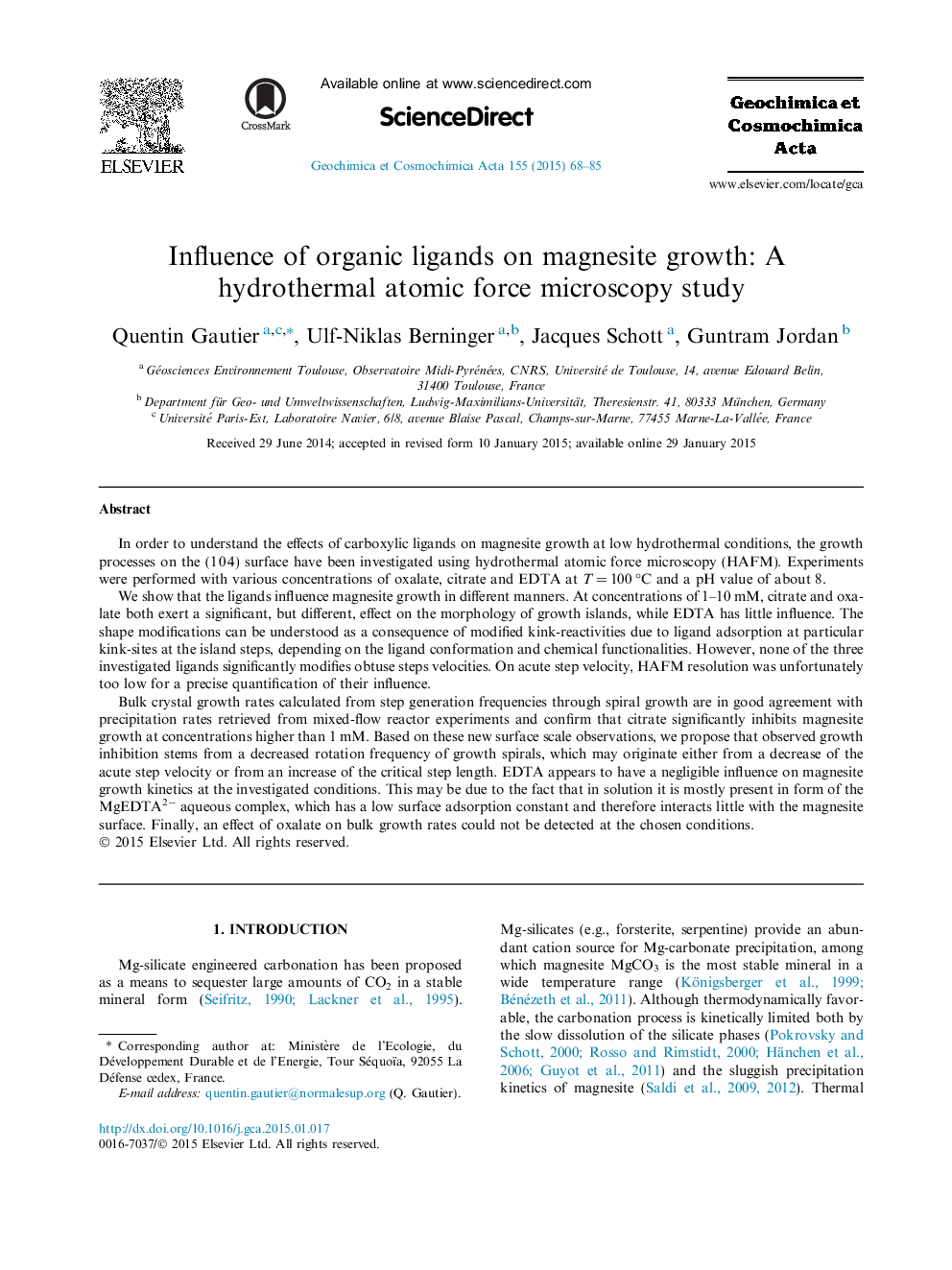| Article ID | Journal | Published Year | Pages | File Type |
|---|---|---|---|---|
| 4701958 | Geochimica et Cosmochimica Acta | 2015 | 18 Pages |
In order to understand the effects of carboxylic ligands on magnesite growth at low hydrothermal conditions, the growth processes on the (1 0 4) surface have been investigated using hydrothermal atomic force microscopy (HAFM). Experiments were performed with various concentrations of oxalate, citrate and EDTA at T = 100 °C and a pH value of about 8.We show that the ligands influence magnesite growth in different manners. At concentrations of 1–10 mM, citrate and oxalate both exert a significant, but different, effect on the morphology of growth islands, while EDTA has little influence. The shape modifications can be understood as a consequence of modified kink-reactivities due to ligand adsorption at particular kink-sites at the island steps, depending on the ligand conformation and chemical functionalities. However, none of the three investigated ligands significantly modifies obtuse steps velocities. On acute step velocity, HAFM resolution was unfortunately too low for a precise quantification of their influence.Bulk crystal growth rates calculated from step generation frequencies through spiral growth are in good agreement with precipitation rates retrieved from mixed-flow reactor experiments and confirm that citrate significantly inhibits magnesite growth at concentrations higher than 1 mM. Based on these new surface scale observations, we propose that observed growth inhibition stems from a decreased rotation frequency of growth spirals, which may originate either from a decrease of the acute step velocity or from an increase of the critical step length. EDTA appears to have a negligible influence on magnesite growth kinetics at the investigated conditions. This may be due to the fact that in solution it is mostly present in form of the MgEDTA2− aqueous complex, which has a low surface adsorption constant and therefore interacts little with the magnesite surface. Finally, an effect of oxalate on bulk growth rates could not be detected at the chosen conditions.
